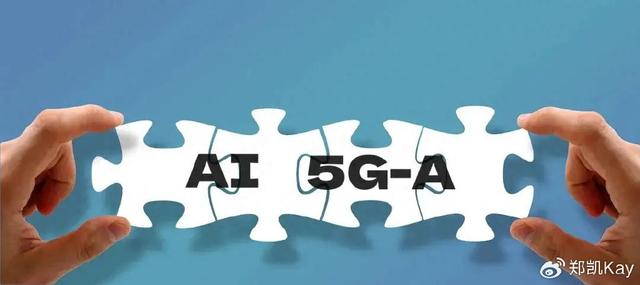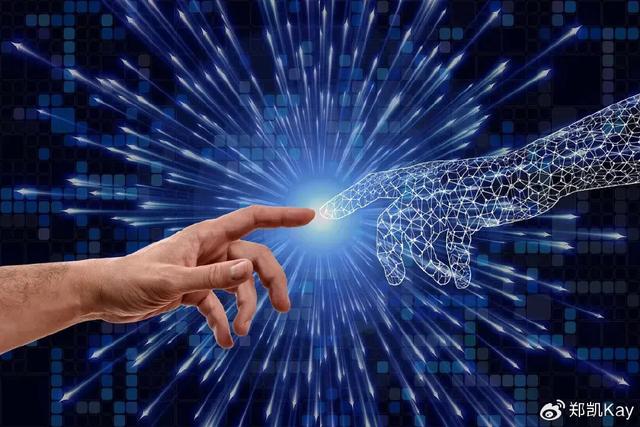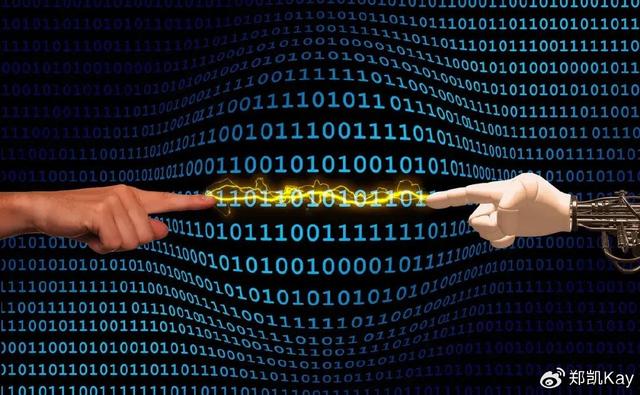Alvin Toffler predicted in "The Third Wave" that "humanity is undergoing a profound social change driven by new technologies." AI technology is undoubtedly the most important accelerator in this change.
This revolution led by AI is full of temptations and unknowns. But every evolution of human civilization stems from the continuous exploration of new things and the pursuit of new worlds that were unreachable in the past.
But in the complicated and confusing future world, there must be certain technical elements that can keep the development trajectory of the intelligent world from deviating from the channel.

In June this year, with the freezing of the first version of the 5G-A standard, the first year of 5G-A commercialization officially arrived. At the same time, Al technology innovation and application are being integrated into terminal equipment and penetrating thousands of industries at an unprecedented speed. When the first year of commercialization of 5G-A collides with the first year of Al entry-level, what kind of sparks will be produced?
In the recent "People's Living Room" column organized by People's Daily with the theme of "Embracing the AI Era and Building New Momentum for the Integration of 5G-A and AI", we read that the integration of 5G-A technology and AI will create a better future for the future. The certainty that a smart world brings.
Starting in 2023, a storm surrounding large AI models has intensified.
McKinsey analysis points out that artificial intelligence can bring an annual global economic value of between US$13.6 trillion and US$22.1 trillion, of which generative AI can bring an annual global economic value of US$2.6 trillion to US$4.4 trillion. between US dollars.
At the beginning of this year, the "2024 AIGC Application Layer Ten Trends White Paper" released by IDC also showed that with the development of AIGC technology, intelligent applications will show explosive growth. At the same time, IDC predicts that by 2024, more than 500 million will emerge worldwide. new applications, which is equivalent to the number of applications that have appeared in the past 40 years.

Liu Zhiyuan, associate professor at Tsinghua University and co-founder of Wall-Facing Intelligence, said: "Since 2023, large language models represented by ChatGPT have brought us a very smooth natural language interaction model. Compared with previous artificial intelligence technology solutions, large model technology The biggest feature is that it is universal. Before 2018, artificial intelligence technology was more specialized intelligence.”
Therefore, Liu Zhiyuan believes that the new artificial intelligence technology represented by large models has led human society to the era of general artificial intelligence, that is, the era of "AGI" (Artificial General Intelligence). This new era will have the characteristics of "omnipotence" and "all-powerful". The three major characteristics of "omnipresent" and "omnipotent".
"Omnipotent" means that AGI will become smarter and smarter, and can even become the smartest representative in China like humans, and can solve more difficult challenges; "omnipresent" means that in the future, intelligence will be spread across the terminals closest to users. The side model will enter portable devices such as mobile phones and computers, bringing intelligence very close to users.
With the "omnipotent" large model and the "omnipresent" end-side model, if they can be connected through a powerful wireless network, the needs of users in various scenarios can be realized and "omnipresent" can be achieved. meeting". Obviously, in order to achieve the "endgame" of being "omnipotent", the evolution speed of wireless networks must be able to match the speed of AGI evolution.
Yang Hua, secretary-general of the TD Industry Alliance, also said, “Large model applications are very helpful to all walks of life, but the effective implementation of large models requires a strong mobile network to support it and deliver its capabilities to all angles. The combination of 5G-A and AI solves this problem very well. The 5G-A network not only provides strong support for AI applications and becomes the cornerstone of the network, but also makes the scheduling of AI training computing power more flexible and convenient. On call.”
This is why there is a mutually reinforcing relationship between 5G-A technology and AI. The coordinated development of both parties will usher in an era of general artificial intelligence.
Taking a closer look at the "ubiquitous" trend, we indeed find that the development speed of on-device intelligence is astonishing.
IDC data predicts that global GenAI smartphone shipments will increase by 363.6% year-on-year in 2024, reaching 234.2 million units, accounting for 19% of the entire smartphone market. Smartphone manufacturers represented by Huawei continue to integrate AI technology into mobile phones; In addition, the AI PC market has also ushered in the "first year" of explosive growth. Data shows that global AI PC shipments are expected to account for 18% of total PC shipments in 2024, and will rapidly grow to 80% by 2028, with a compound annual growth rate of 44%.

Therefore, Cao Ming, President of Huawei’s wireless product line, compared 2024 to “the first year of AI entry.” He pointed out that “injecting artificial intelligence capabilities into terminals has become a general trend. At the same time, from the application side, APPs with AI functions There are currently more than 3 million models, even more than the total number of ordinary apps that do not support AI. Therefore, we predict that by 2030, 70% of terminals will support AI.”
So, what changes will the trend of “AI entry” bring?
The first change is "cross-platform" AI. Because AI functions will appear on both fixed and mobile terminals at the same time, that means users can perform the same AI operations on computers or mobile phones with AI functions.
The second change is polymorphic terminals. Mobile phones and computers are just terminals in the traditional sense. In the future smart era, cars, wearable devices, watches, bracelets, glasses, and various production equipment in engineering can all be called "terminals."
The third change is the multi-modalization of human-computer interaction modes. This represents a comprehensive shift from traditional text input mode to voice interaction. "In the future, with the 'AI entry', any terminal can convert any sound or image it sees or hears to achieve interaction. 'AI entry' seems to have become a reality this year , and will be rapidly popularized among various terminals within reach,” Cao Ming said.
Of course, the basic conditions for the emergence of the "AI entry" trend are also supported by the technological development of 5G-A. At the same time, 5G-A will also play its due value in all aspects of AI implementation.
In this regard, Wang Dapeng, chief expert of China Mobile Research Institute, said, “5G-A can provide support from three elements of AI: First, in terms of connectivity, 5G-A’s new integrated new technology in the specific network space can bring more powerful connectivity capabilities. This ensures the quality of AI services and can provide ubiquitous connected AI services; second, in terms of computing, based on the edge, end, and cloud computing power base provided by 5G-A, it provides AI computing capabilities; third, in terms of computing In terms of data, 5G-A can provide AI with richer data sources through new technologies such as synaesthesia and passive IoT.”
Through support in connection, computing power and data, 5G-A and AI can achieve deep integration, allowing AI technology to be better applied to all aspects of production and life such as industry, education, and medical care.
The future of the intelligent era is certainly fascinating, but if AI large-model technology wants to get out of its ideal "utopia", it must demonstrate its value through its implementation in the industry. In this sense, the combination of wireless network technologies such as 5G-A and AI is even more urgent.
Wang Dapeng proposed, "5G-A is not only a further enhancement of the three major capabilities of 5G, but also takes the 10-fold performance improvement of the existing 5G network as a design goal. It also expands the 5G capability triangle into a capability hexagon, like synaesthesia. , integrated computing and intelligent integration, and new capabilities such as the integration of space and earth, the application scenarios will be more extensive in the future.”
For example, at the Metaverse Center of Beijing Workers' Stadium, the Metaverse based on China Mobile's 5G-A network has provided viewers with a new experience of digital and real integration; in Shougang Paradise, the immersive and high-density SoReal competitive game pilot has been implemented through The 5G-A network can support dozens of players to enjoy the gaming experience in the virtual space at the same time.
Liu Zhiyuan also put forward a new vision, "With the development of the Internet in the past few decades, network technology has connected devices, people and information around the world. We envision that facing the future, if intelligent individuals around the world are fully connected, Connected together, I think this will usher in the second emergence of artificial intelligence, which I call 'swarm intelligence.'" Accordingly, Liu Zhiyuan believes that the deep integration of 5G-A and AI is an important change and an indispensable development stage for AI.
So, when the future of the artificial intelligence era has become a consensus, what preparations should we make to integrate into this era?
Cao Ming pointed out, "First of all, we must adapt and learn to embrace this era. The combination of artificial intelligence and the Internet will bring better terminal application experience than ever before. Because China has rich network resources and complete ecological chain and a very active innovation ecosystem, all of which will promote the rapid development of 'AI+5G-A'."
Indeed, AI’s change to human society is not just a form, but a change in life and work patterns. Therefore, we must adapt to the various changes brought about by AI in terminals, businesses, applications, and even life. This requires a process of acceptance, allowing us to get used to and adapt to new changes.
"Huawei will work with industry partners to build a 'ubiquitous' 5G-A network in China that can meet various AI applications and provide a good experience in various scenarios around the trend of artificial intelligence," Cao Ming said. .